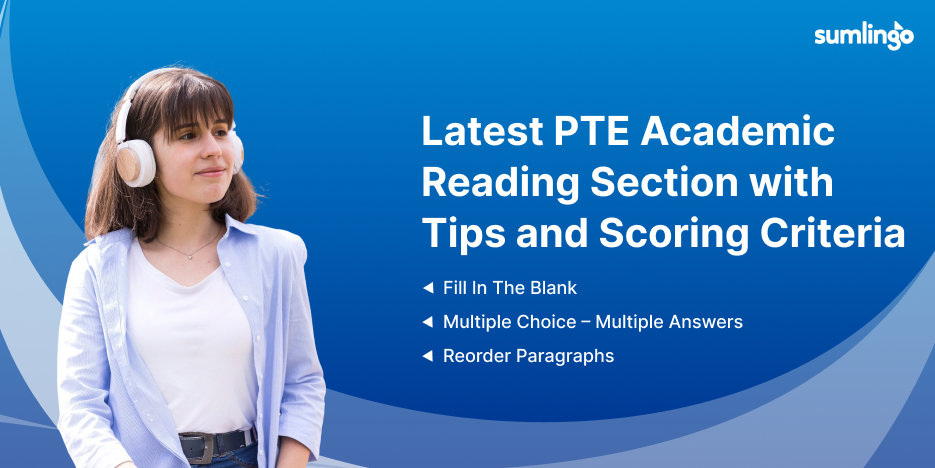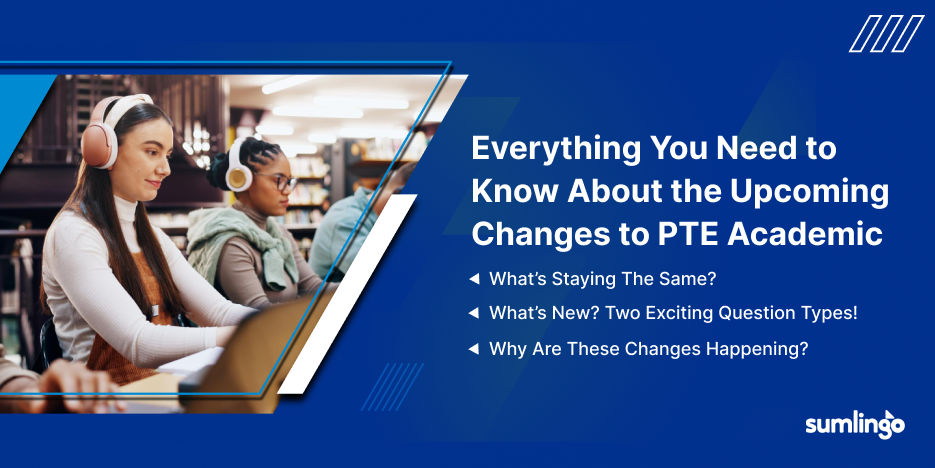The PTE Academic exam features the Re-tell Lecture task, designed to evaluate both listening and speaking proficiency. In this task, test-takers listen to a recorded lecture and then summarize it in their own words.
The task is scored based on three main criteria:
- Content – How accurately you convey the key points from the lecture.
- Pronunciation – The clarity and correctness of your spoken language.
- Fluency – How smoothly and naturally you speak without unnecessary pauses or hesitations.
Each of these criteria contributes to a total score out of 16 for the Re-tell Lecture. Additionally, an expert rater will review the content of your response before assigning the final score.
Understanding the Task
In this task, you are required to listen to or watch a short lecture and then retell it in your own words within 40 seconds. Here, how it works:
- Focus on Main Points: As you watch or listen to the lecture, pay attention to the key ideas or concepts the speaker emphasizes.
- Take Quick Notes: Jot down important points or phrases while listening.
- Use Your Own Words: Try to explain the content in your own words instead of repeating the lecture word for word.
- Keep It Short and Concise: Since you have just 40 seconds, focus on summarizing the main ideas without adding unnecessary details. Stick to the most important points.
Scoring Criteria
Content
- 6: Your response is clear, accurate, and demonstrates a full understanding of the lecture. You successfully paraphrase the main ideas in your own words, adding relevant details, and your ideas are well-organized and easy to follow. A variety of vocabulary is used effectively throughout. using a range of vocabulary, and the response flows logically with good connections between ideas.
- 4: The response covers some main ideas but may include inaccurate points or focus on less important details. You try to use your own words, but there are some repetitions. The ideas lack smooth connections, and the response may be a little difficult to follow.
- 3: You capture some ideas from the lecture but may mix up important and unimportant details or repeat information without changing it. The vocabulary used is limited and basic, and the response lacks clear organization, making it hard to follow.
- 2 : Your response is mostly inaccurate or incomplete, focusing on less important details or repeating words from the lecture without adding meaning. The vocabulary is very limited, and the ideas are not connected well, making the response hard to understand.
- 1: The response repeats only a few words or phrases from the lecture with no meaningful explanation. The vocabulary is highly restricted, and there is no clear organization or logical flow of ideas.
- 0: The response is too minimal to be given a score, though it may relate to the lecture in some way.
Pronunciation
- 5: Native-like pronunciation with clear vowels and consonants, using natural speech patterns and correct stress.
- 4: Advanced pronunciation, where most sounds are clear, though there may be small errors.
- 3: Good pronunciation, but some mispronunciations or unclear stress may occur.
- 2: Intermediate pronunciation, with a few mispronunciations or missing consonants.
- 1: Intrusive pronunciation, with many errors making comprehension difficult.
- 0: Non-English pronunciation, making comprehension extremely challenging.
Fluency
- 5: Native-like fluency, with smooth speech and no interruptions.
- 4: Advanced: Good rhythm and phrasing, though one or two pauses or mistakes may occur.
- 3: Good speed, but occasional pauses or repeats that don’t disrupt understanding.
- 2: Intermediate: Speech may sound choppy, with pauses or repeats affecting flow.
- 1: Limited: Irregular rhythm, with frequent pauses and mistakes that make speech difficult to follow.
- 0: Disfluent speech, making it hard to understand due to frequent pauses and errors.
Key Tips to Master the Re-tell Lecture Task
Step 1: Predict the Topic Using the Image
Before the lecture starts, you will have three seconds to look at an image related to the content, but sometimes there is no image available to review. Use this brief time wisely to:
- Analyze the image: What does the image depict? Is it a graph, a diagram, a photo, or some other visual representation?
- Predict the vocabulary: Based on the image, think about what words and phrases might be used in the lecture. This will help you anticipate the content and give you a clearer understanding of when the audio begins.
Step 2: Take Notes on Key Points
While the lecture is playing, you can take notes on your erasable notepad. This is essential to help you remember the main points of the lecture. Here’s how to make the most of your note-taking:
- Write keywords: Don’t try to write everything down instead, you should focus on capturing the key ideas. It includes important concepts, names, dates, or any numbers that seem relevant.
- Use abbreviations: Develop a system of short-hand or symbols to speed up your note-taking. The goal is to quickly jot down the most critical information.
- Organize your notes: If possible, try to organize your notes in a logical order, for example, bullet points or short sentences or words like you can use the symbol “&” instead of writing “and”.
Step 3: Organize Your Response
When the 10 seconds of preparation time ends, you’ll have 40 seconds to retell the lecture. It’s crucial to be organized, as this will help you cover all the main points without missing anything. Here’s a simple structure to follow:
- Introduction: You should provide a brief introduction to the topic by mentioning the main theme or subject of the lecture. For example, “The lecture discussed the impact of climate change on agriculture.”
- Main Points: After the introduction, quickly mention the key details or arguments made in the lecture. You don’t need to include every single detail but you should focus on the most important facts or ideas.
- Example: “The speaker highlighted how changing weather patterns affect crop yields, especially in tropical regions. He also discussed the challenges farmers face due to unpredictable rainfall and higher temperatures.”
- Conclusion: Conclude with a summary or conclusion. If the lecture made predictions or suggestions, mention them briefly. For example, “The lecturer concluded that investing in drought-resistant crops could help mitigate the effects of climate change on farming.”
Step 4: Speak Clearly and Fluently
Your response will be scored on oral fluency and pronunciation, so it’s essential to speak clearly. Here are some tips to ensure you do your best:
- Don’t rush: Speaking too quickly can affect your clarity you should aim for a steady, natural pace.
- Avoid hesitations and self-corrections: Try not to pause for too long, and avoid repeating or correcting yourself. This will waste precious time and negatively impact your fluency score.
- Use linking words: To make your response sound more natural, use connecting phrases like for example, on the other hand, and as a result. This will help your ideas flow smoothly.
- Focus on pronunciation: Make sure to articulate each word clearly. Pay attention to common sounds and stress patterns to make your speech more natural and easy to understand.
Step 5: Practice Regularly
To excel in the Re-tell Lecture task, regular practice is key. Here are some ways to improve:
- Listen to different types of lectures: Practice with a variety of lecture topics, including science, technology, history, and social issues. The more you expose yourself to different content, the better you’ll become at summarising the information.
- Time yourself: You should try to complete your response within 40 seconds.
- Record and review: After practicing, listen to your responses to evaluate your pronunciation, fluency, and whether you covered all the key points. It can be achieved by taking a practice test on Sumlingo pte practice software.
Step 6: Avoid Common Mistakes
There are several mistakes candidates often make in the Re-tell Lecture task. Be mindful of the following:
- Repeating the lecture verbatim: Don’t try to memorize and repeat the lecture word- for-word. The task requires you to paraphrase and summarise the content.
- Overloading your response with details: While it’s important to cover the main points, don’t overcomplicate your response by including too many minor details. Keep it concise and relevant.
- Don’t take long pauses: Short pauses are okay, but long pauses can either lower your score or stop your microphone from recording if you pause for 3 seconds.
- Lack of structure: Make sure your response follows a logical order, such as an introduction, main points, and conclusion.
Sign up on Sumlingo and get access to PTE prediction files to provide updated PTE material for the exam.










